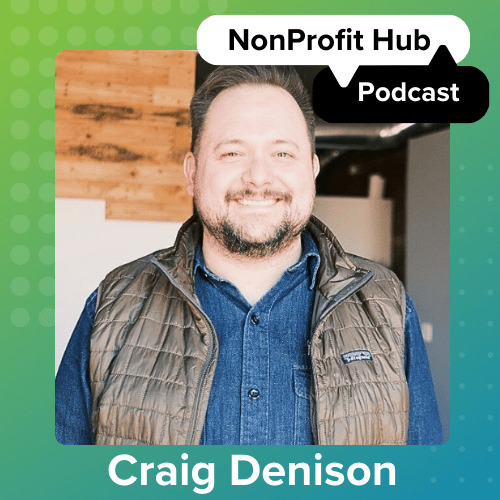Your social media strategy should never involve posting online “just because.”
Whatever you’re posting, from quirky videos at the office to educational infographics, your social media should have a defined goal—and that starts with identifying an audience. Your audience impacts your social media strategy and content choices, both of which are working together to achieve your goals. Once you’ve identified your audience, it will answer important questions about where your resources are going and why you’re doing what you do online.
Step 1: Knowing Your Audience
It’s the first step because it’s the most important. Knowing your audience before you jump into anything helps you employ your time and resources more effectively. For example, if you’re a nonprofit looking to serve senior citizens and you know that 90% of Instagram users are under the age of 35, then Instagram might not be your best bet. Instead, you can use the energy from maintaining an ineffective account on somewhere else that’s more worth your while.
You might not have some of the information about your audience that you need right off the bat, and that’s okay. You can analyze their interests and what they do online over time through data and social media analytics. While you’re doing that, make a plan for how you want to develop an online relationship with your audience in the future.
Here are some things to keep in mind when you’re looking to find, maintain or grow your social media audiences:
- There’s help at your fingertips. Some sites like Facebook have insight pages located within the platform. Facebook Insights has lots of valuable statistics that offer a starting point for figuring out who your audience is, especially if your organization’s page has been around for a while. Here, you can find your audience’s demographics, when they’re on Facebook and the posts that they like best.
- Always stay consistent. It’s okay to have more than one social media audience—for many organizations, that’s the reality. As long as you’re aware of each audience’s differing needs and preferences, your social media can stay on track. However, with multiple audiences, it’s important to stay consistent. Use the same profile picture, username and voice so that your organization has a unified presence across all platforms.
- Grow where you know. Trying to expand to other social media audiences? Include links to your social media in newsletters and on your website so that you can gather communities that are already interested in and interacting with your organization.
Step 2: Listening to Your Audience
Now that you know who your audience is, what do you do with that information? Social media is a good way to talk to your audience, get the word out and share your mutual passions.
Don’t get caught just talking at your audience, though; make sure to listen too. Where feedback is concerned, these are some of the best people to get it from. They’re engaged in your organization, which means they’re listening to what you have to say. You should return the favor.
In the digital world, listening looks a lot different than it does in face-to-face communication. Pay attention to the comments that you’re receiving and why you’re getting the likes and shares that you do. When you’re really listening to your social media audience, you can receive the feedback that you might not get otherwise.
It might seem complicated at first, but once you get the hang of it, social listening can do wonders for your organization. Fortunately, there are movers and shakers out in the world that have created tools to make this part a whole lot easier. Here are just a few:
- Twitter hashtags. These are great for tracking big trends, but you can also utilize them locally. Make a hashtag for your nonprofit or an event that you’re hosting—once it starts circulating, you can ask (or simply look) for audience feedback with the tag.
- Hootsuite. Track your audience’s posts and mentions of your NPO all in the same place. On this site, you can manage social listening for your social media accounts at no cost.
- Google Forms. You can develop surveys as another way to listen to your audience online. Be sure to make some questions open-ended—create room for out-of-the-box feedback by leaving out the check box.
- And many more. There are a multitude of free social listening websites and applications that organizations can make use of nowadays. Do your research and find the ones that work best for you and your audience in order to track the metrics that matter.
_____
Social media is one of the best ways for organizations to communicate with and engage their audiences. It lets nonprofits reach individuals far and wide, it’s a fun outlet to creatively market and (best of all) it’s free.
Never take social media for granted, though—using it willy-nilly will spread your resources too thin, and your campaigns will lose their effectiveness. Instead, creating social media around a specific audience, clear goals and strategic thought will give your NPO a boost in the right direction.






